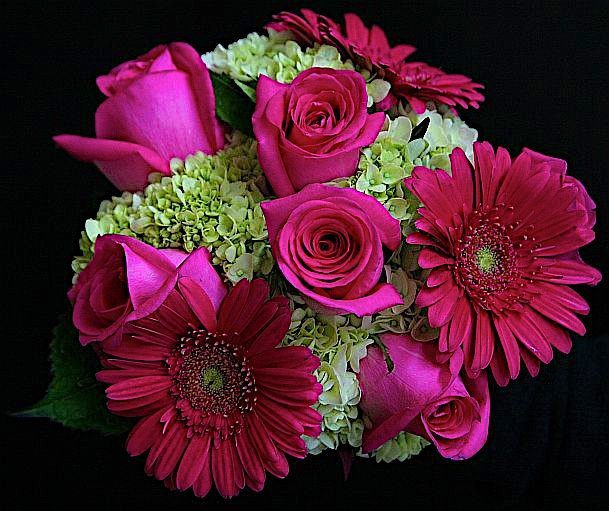Why You Can Go Bold And Colorful With Your Wedding Bouquet
Trends run in cycles. After a lot of delicate, demure white bridal bouquets made of lily of the valley, white roses, white peonies and baby’s breath, who wasn’t ready for a dash of color? Queen Victoria inaugurated the White Wedding in 1840 in England, with her white wedding dress, and a headdress of white orange blossoms. Up until then brides wore any old color – often blue. Victoria’s dress was a sensation, and ever since then white defined virginity, innocence and the “necessary” color for a bride’s dress and, it followed, for her bouquet. After that it’s been white, white, white, white, white.
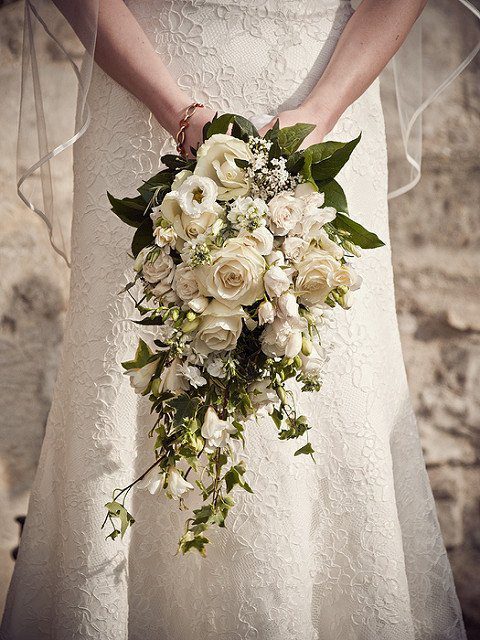
No longer. Some modern brides wear red, peach, even black. “You are seeing today’s brides embrace a confident self-expression and a refined, differentiated aesthetic when designing bouquets,” says Marna Ringel, a florist in Fairfield, Connecticut, who had a bride five years ago who wore chocolate brown and turquoise, and wanted an equally unusual bouquet.
The white wedding gowns we do see are hardly traditional. They come strapless, backless, hiked up, arrayed with the kinds of features that would have made Victorians faint. Why should bridal bouquets be boring? Why not carry a bouquet of stunning and vivid ranunculus or their cousins the anemone?
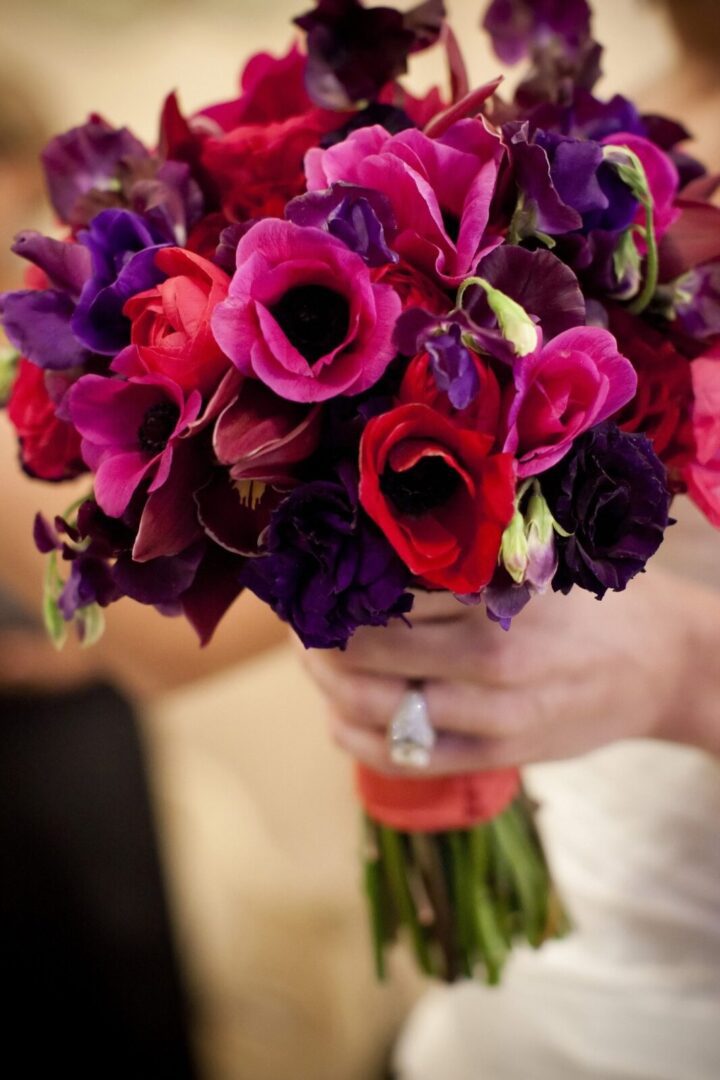
Avi Adler and David Stark in their book “To Have and to Hold: Magical Wedding Bouquets” are fans of both. They call the anemone the “essence of chic,” and praise the “profound exquisiteness” of the ranunculus. Both offer bold colors.
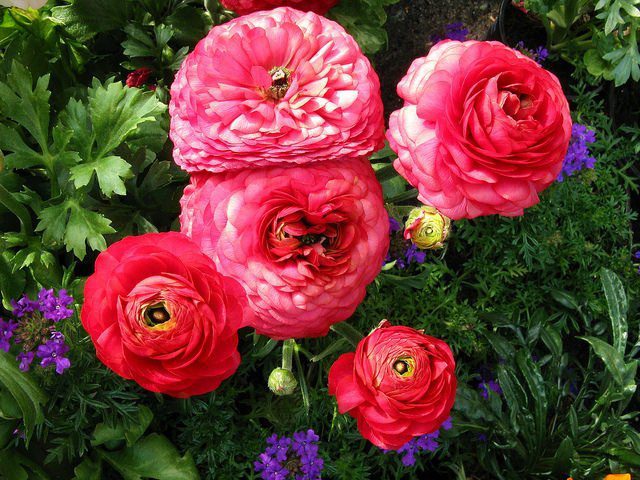
Anemone is available from October to May in deep purple, red, pink, blue, white and magenta. And ranunculus, also called the buttercup, has tightly compacted blossoms of hundreds of petals. It comes in colors ranging from white to cream, pink to yellow to orange to light red to deep red and almost purple. “That yummy spectrum,” Adler and Stark say, “along with a moderate price and a sturdiness that will make it through even the longest event, make the ranunculus a justifiably popular bouquet choice.” Ranunculus is available from January to May and would certainly jazz up a springtime bridal bouquet, as would an armload of tulips.
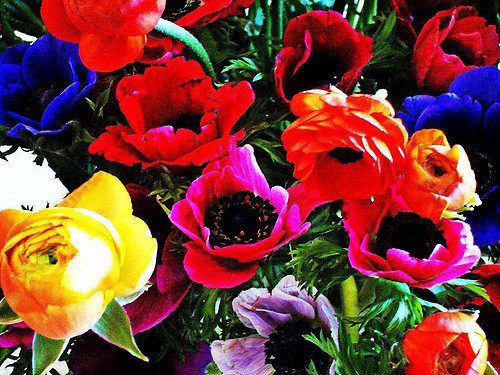
Another elegant option is five or six black star calla lilies. They are not really black, just a deep, deep purple. But they make a dramatic statement against a white gown, or a bridal gown of a different shade.

A ribbon in a contrasting shade, silver perhaps, no bow, would be perfect. Bold red roses, a cascade of purple orchids, bright green bells of Ireland paired with blue iris, tropical birds of paradise. Why not go for it?
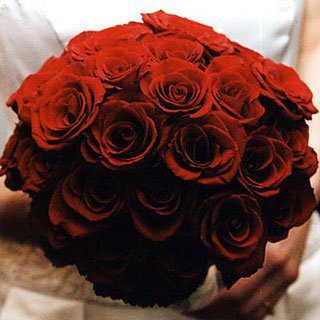
Summer weddings can use casual collections fresh from the garden: dahlias, small sunflowers, zinnias, snap dragons, glads, marigolds, the most cheerful of home-grown flowers.
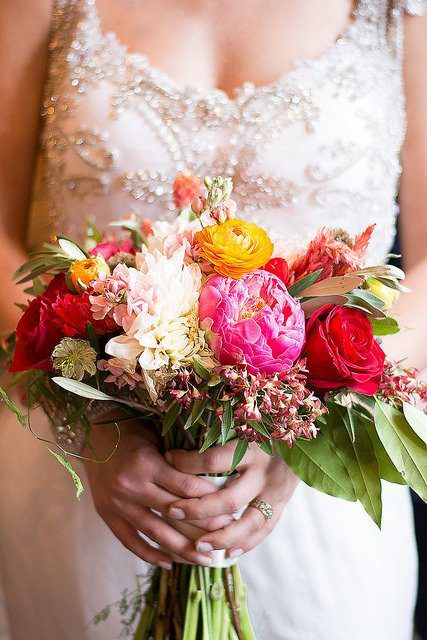
One book warns, however, that late summer and fall wedding avoid the mistake the folks made in the photo at the top: yellow flowers.
“Yellow is a dangerous color because it can symbolize many negative things,” Sam Siv says in “Wedding Bouquets: An Illustrated Picture Guide.” He adds, “Yellow carnations symbolize disdain and yellow roses symbolize jealousy.”
It gets worse. Italians associate chrysanthemums with funerals and would be upset to see them in a bridal bouquet.
Of course, every bride is free to make her own decisions. She may not put pay attention to ancient symbolism or have any Italian relatives. And she may really like yellow chrysanthemums.

If that is the case, we say, “Go for it.” The wonderful thing about a wedding is that it is a starting point for a new life, to make choices.
